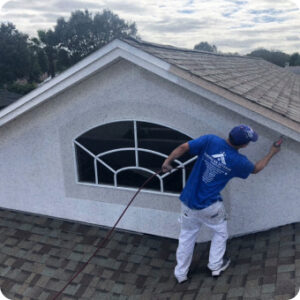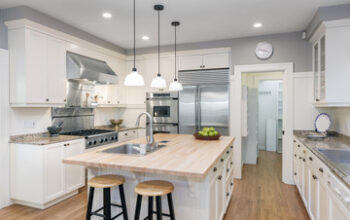Before you hire an exterior painting service, you need to know some basic facts about the cost of the project. Not all painting companies are created equal. They differ in cost and quality, and the two factors can affect the cost of your project. For example, economy paints are cheaper per gallon, but they require more paint to get the proper coverage and thickness. Top-quality paints cost more per gallon, but they give you superior coverage and longer life. 
Paints for the exterior are made of alkyd materials. These materials contain a unique self-cleaning property. Over time, the surface of the paint will oxidize and wash away dirt and minute amounts of paint. This process helps the paint continue to renew itself. In the past, the chalky residue could accumulate on shrubs and foundations. Today, newer paint formulas are designed to minimize chalky residue while still providing excellent adhesion.
You’ll also save money by not having to hire a professional if you have previous painting experience. Professional painters use drop cloths to protect the landscaping and have the equipment and training to work around plants without damaging them. They’ll also know how to work around plants, shrubs, and other landscaping. If you’re a first-time DIYer, you may want to consider hiring a professional exterior painting service. Besides saving money, hiring a professional will improve the curb appeal and increase the home’s value.
Exterior paint has a limited lifespan. Its longevity depends on the type of surface. For primed wood, the paint lasts about ten years. On stucco, the paint lasts significantly longer. The proportions of the different paint ingredients differ. However, there’s one important principle: if you spend more money on paint, you’ll end up paying for more paint jobs in the long run. If you want to avoid costly problems, invest in higher-quality paint.
Hiring a professional painter is the best choice for anyone looking to paint the exterior of their home. While DIY painting may be tempting, the process of exterior painting is dangerous and should only be done by a professional. Professional painters know the right formulas, painting techniques, and other factors for a quality job. And they can guarantee you won’t make any costly mistakes. If you’re looking for curb appeal, hiring a professional painter is a smart investment.
Before applying the first coat of paint, you need to thoroughly clean the exterior of your home. A clean exterior ensures that the paint adheres evenly to the surface. Make sure to use a power washer with cleaning fluid and a brush to scrub off the surface. Also, you need to remove any loose or chipped paint before you begin painting. Once the exterior has been thoroughly cleaned, you can start painting the trim and siding. Once you’ve finished the paint job, you can apply a second coat.
A primer should be applied before the final coat of paint. Primers are universal, and latex paints will adhere to oil-based paints without issues. Oil-based primers are the safest choice for exterior surfaces. A primer won’t hold back stains, but it can be effective in holding back bleed and rust. If you don’t use a primer, you won’t be able to get a professional finish.
Proper weather conditions are important to the success of your exterior painting project. The weather outside will affect the quality of your paint, as moisture and temperature are two factors that can inhibit the curing process. In addition, extreme temperature changes will inhibit curing, leading to bubbles and blistering. You’ll need to wait at least a day before the next rain or snowfall to avoid any problems. If you plan to paint your exterior, consider the following tips to ensure your project is successful.
While interior paints are safe for use indoors, exterior paints are formulated to be outdoors and can withstand a range of inclement weather. In addition, these paints contain mildewcides, which are useful against mold, algae, and mildew. While both types of paints offer a high level of adhesion, exterior paints are better suited to the harsher elements. This means that they will last longer.
When is the best time to paint your exterior? Temperatures vary dramatically from spring to autumn. A large drop in temperature after sundown will affect the quality of the paint. A dip in temperatures may cause cracks and peel. Ideally, exterior painting should be completed in early summer or early fall, when temperatures are still moderate but not freezing. The best conditions for exterior painting include little or no rainfall and a steady temperature. A good day will be warm and sunny for about two weeks, while a nighttime temperature will be cooler and colder.


